Vice President of Human Resources Cover Letter Examples

May 29, 2025
|
12 min read
Learn to write a Vice President of Human Resources cover letter that shines. You’ll bridge leadership gaps and ensure the HR department is a top employee destination. Your letter won't just manage people—it'll manage smiles.
Rated by 348 people
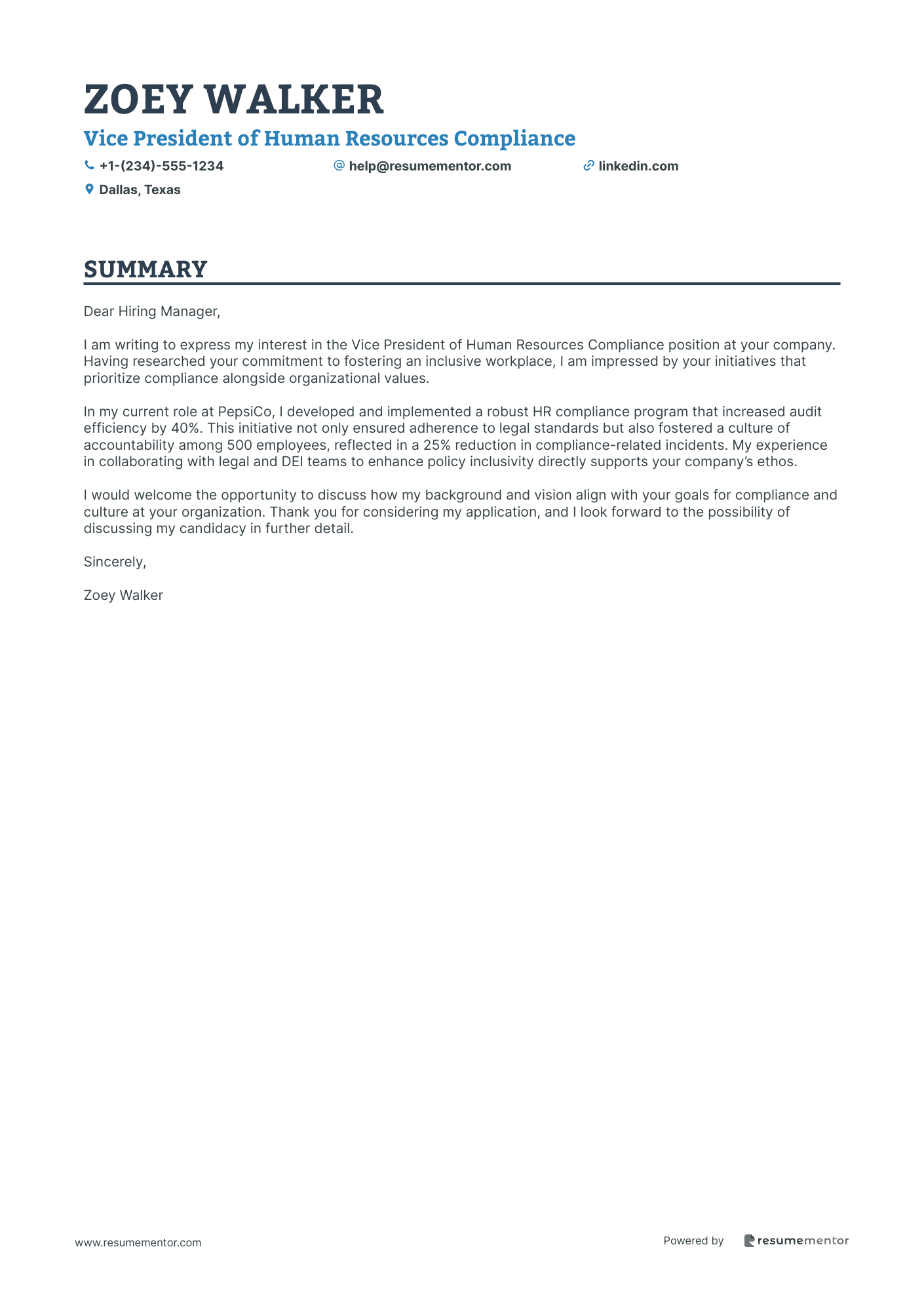
Vice President of Human Resources Compliance
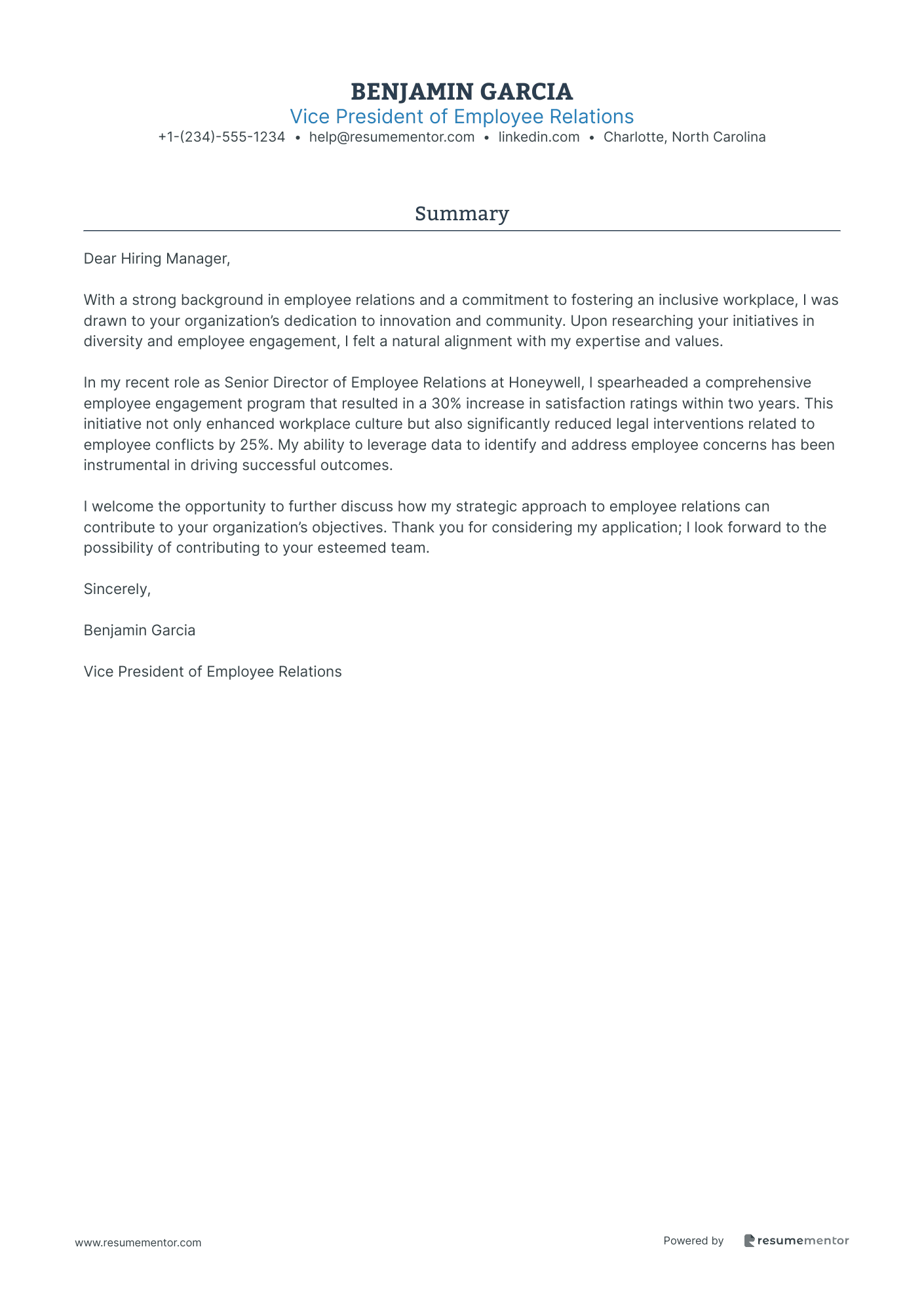
Vice President of Employee Relations
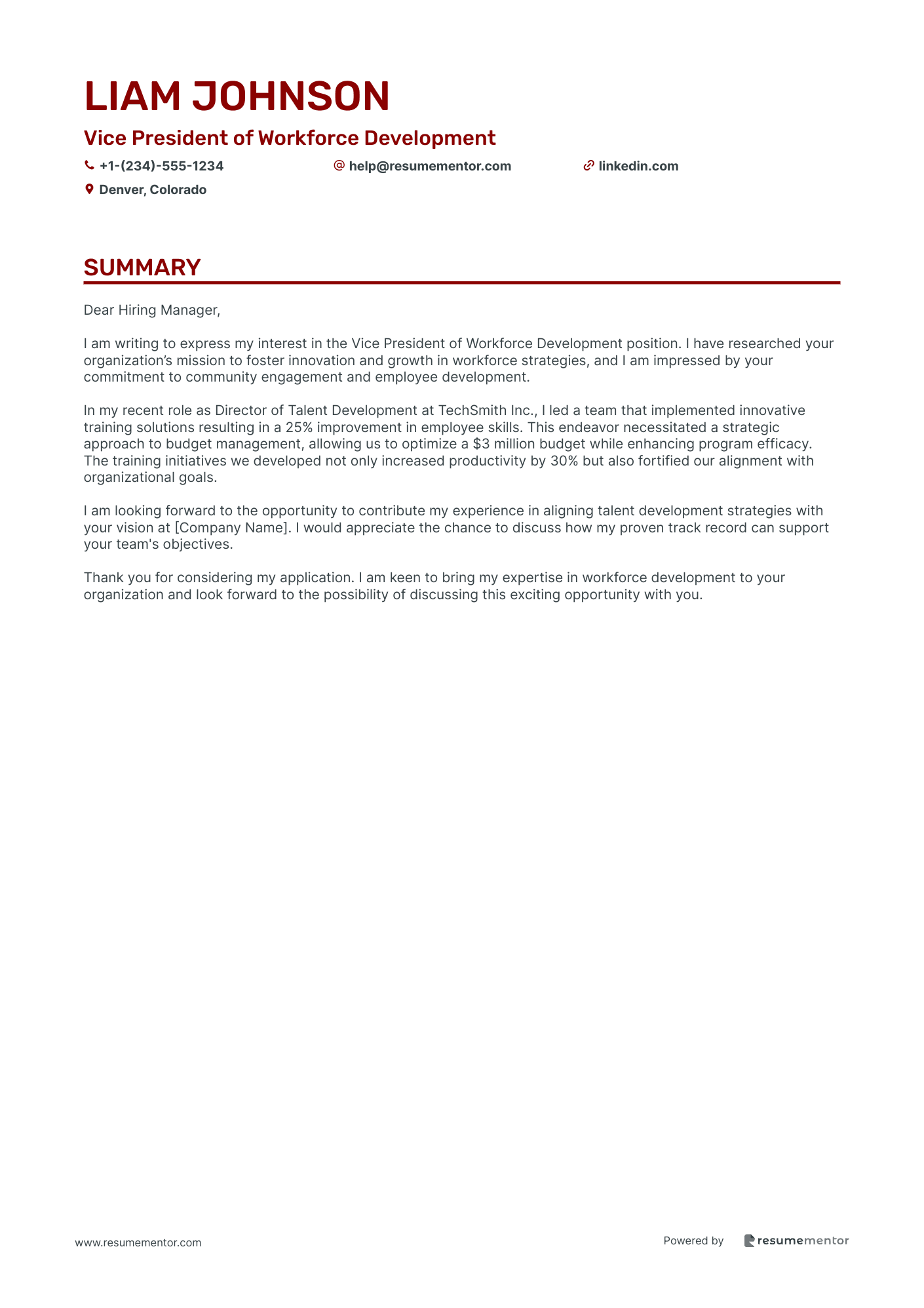
Vice President of Workforce Development
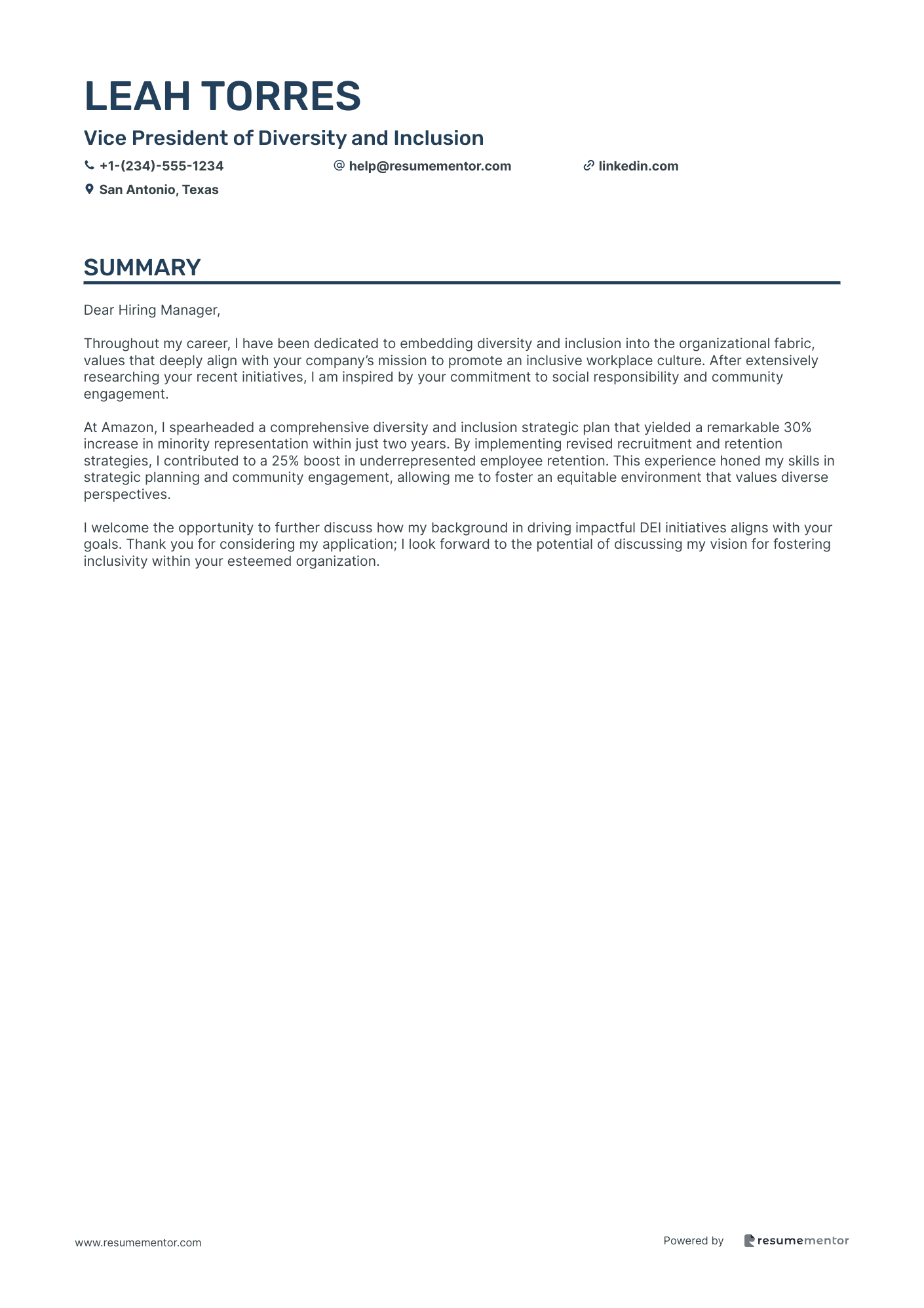
Vice President of Diversity and Inclusion
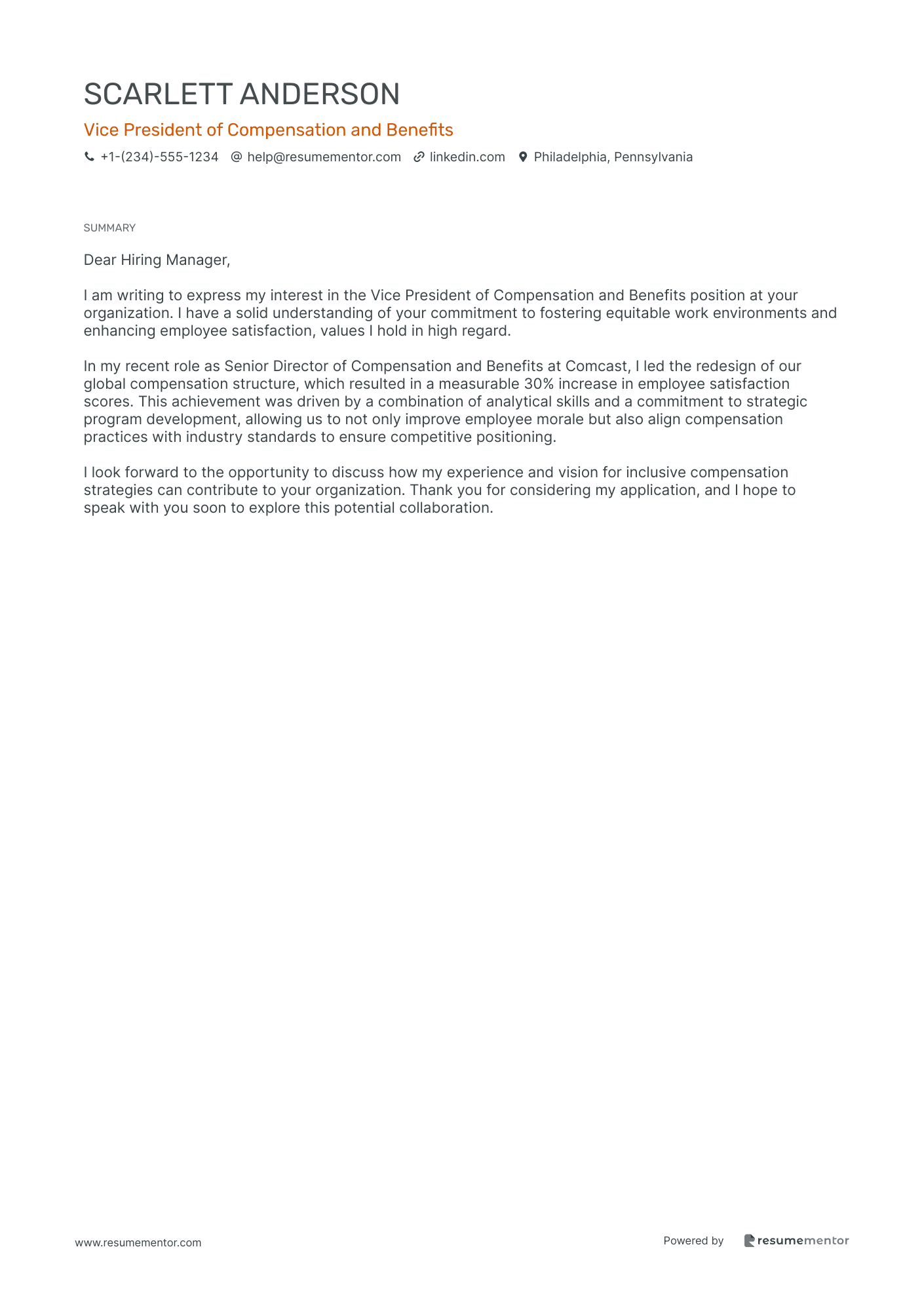
Vice President of Compensation and Benefits
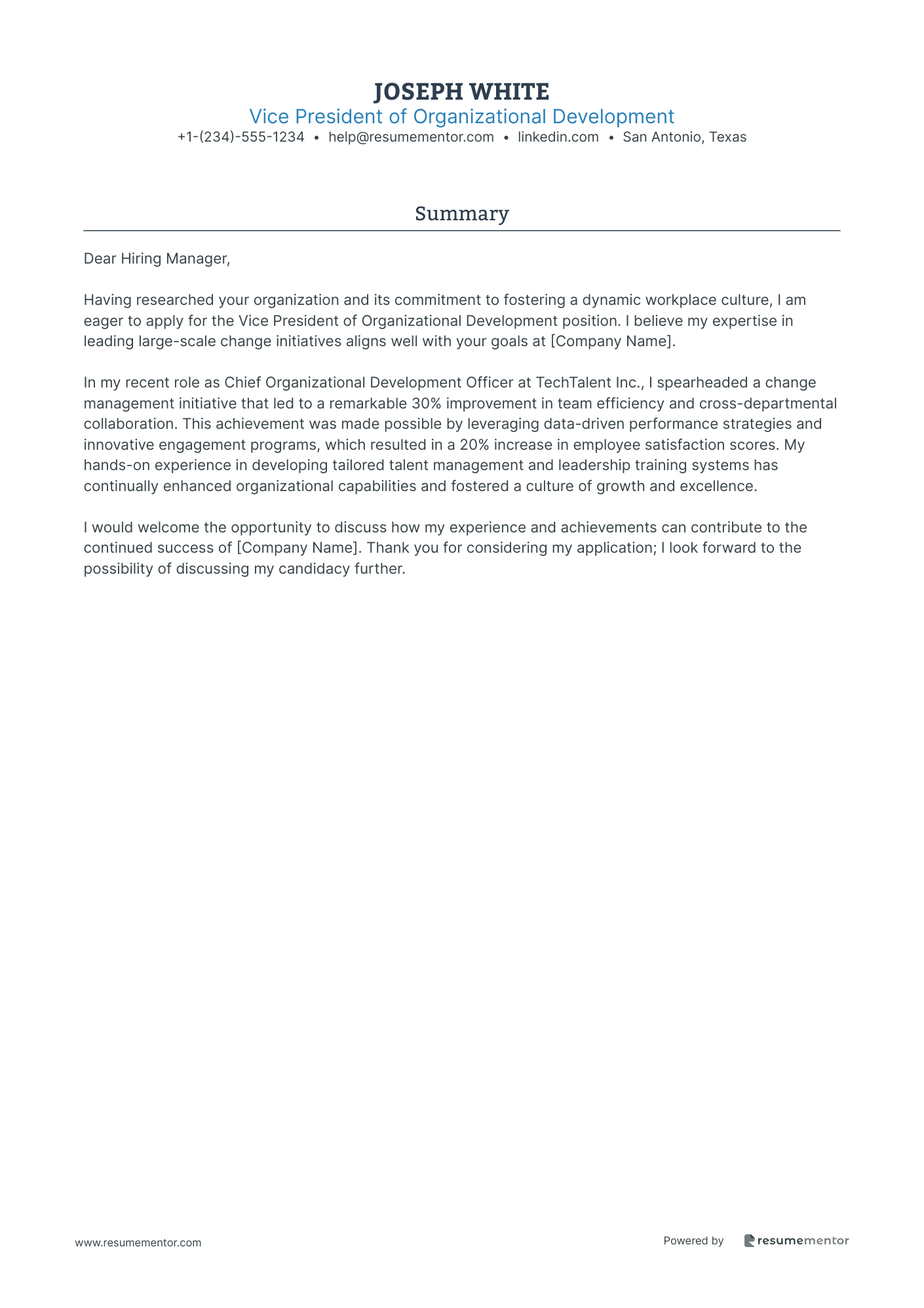
Vice President of Organizational Development
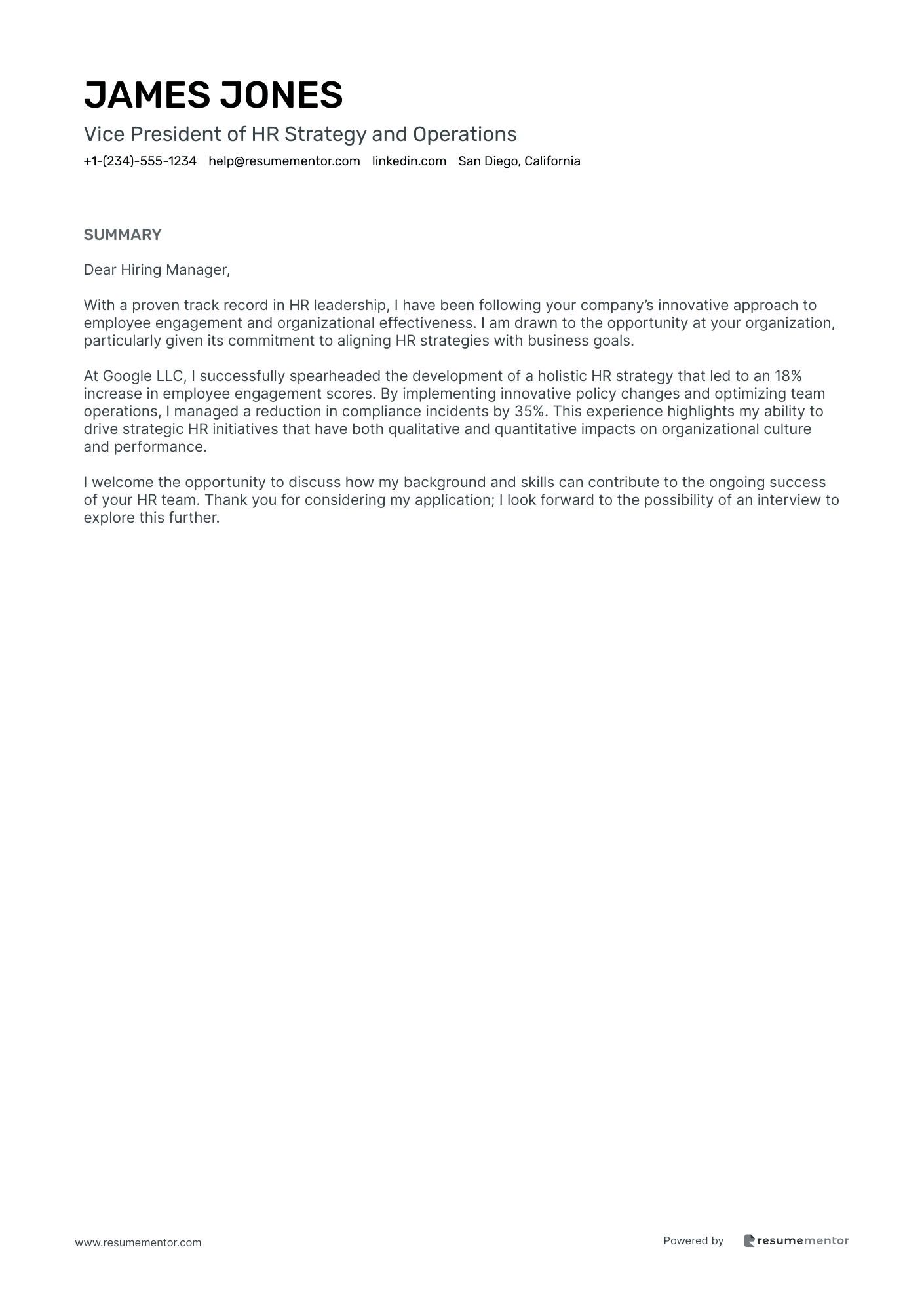
Vice President of HR Strategy and Operations
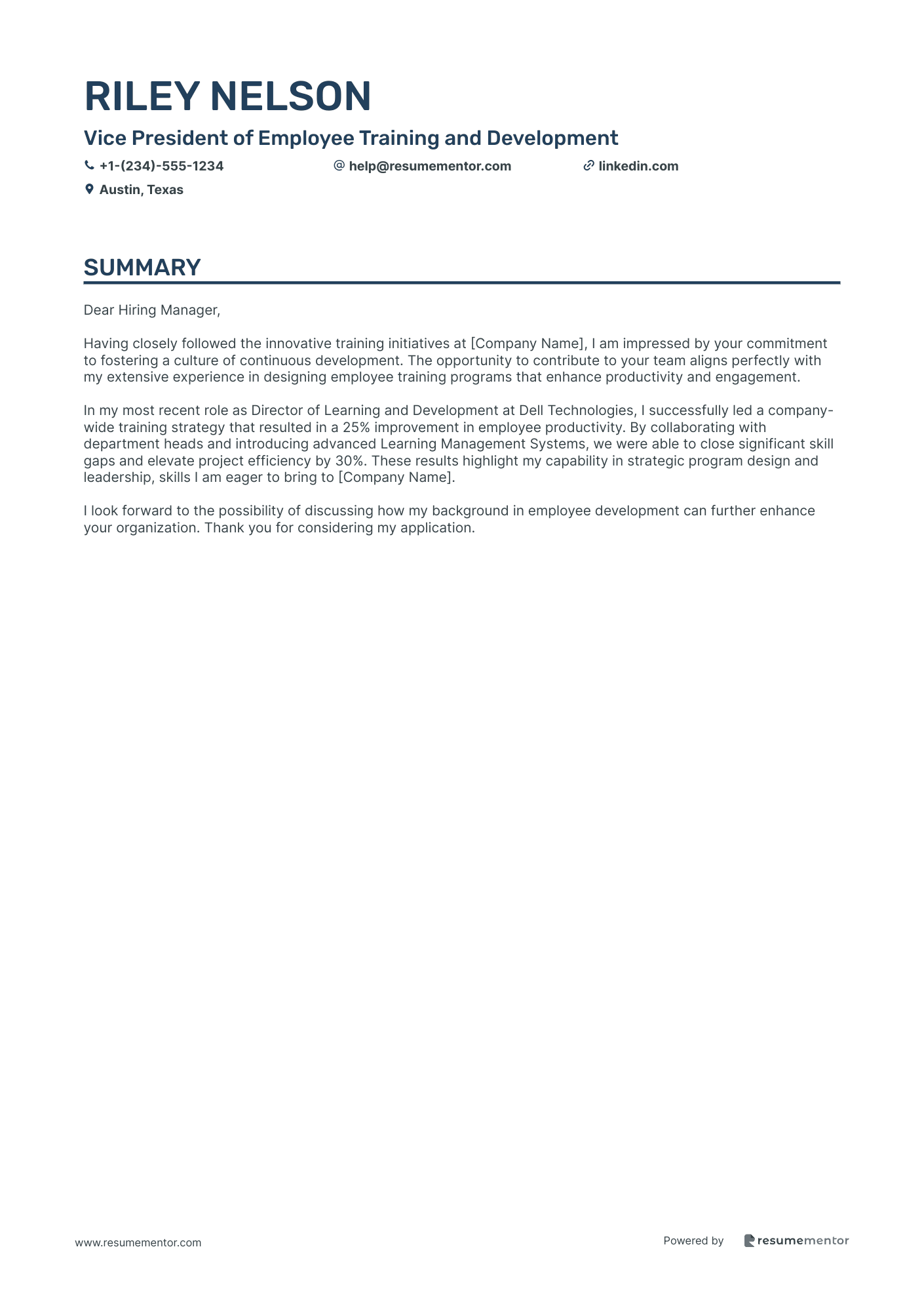
Vice President of Employee Training and Development
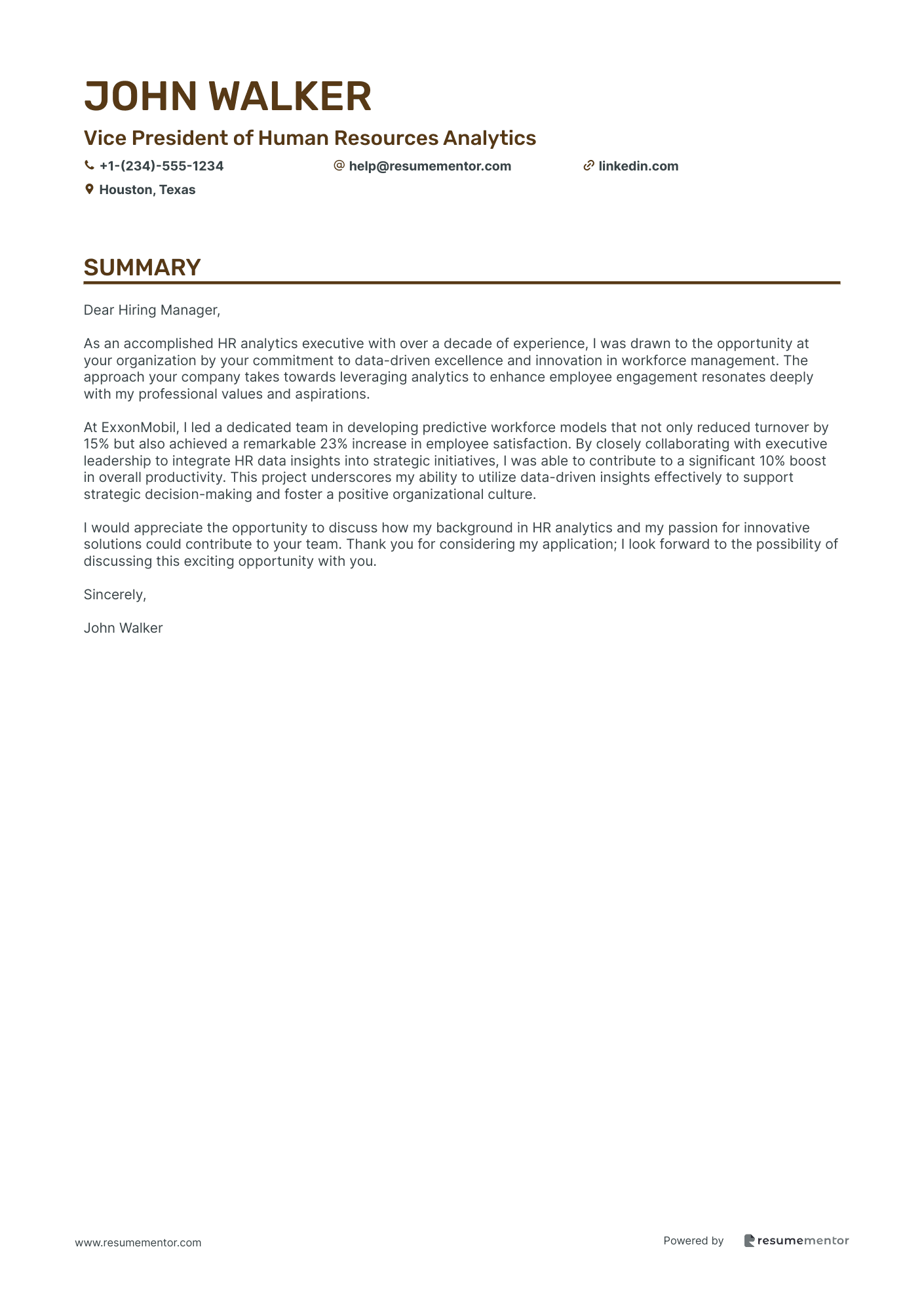
Vice President of Human Resources Analytics
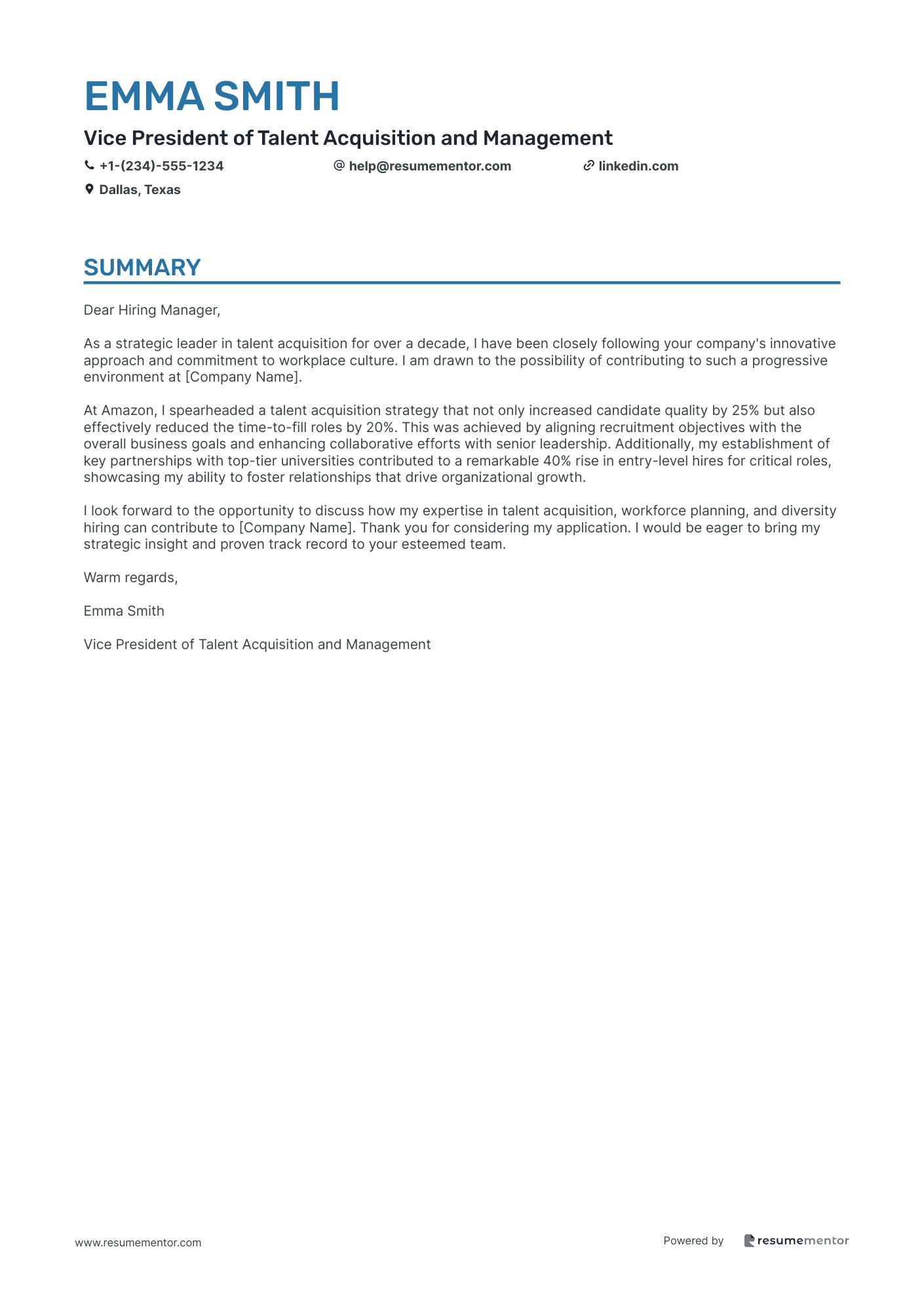
Vice President of Talent Acquisition and Management

Vice President of Human Resources Compliance cover letter sample
Vice President of Employee Relations cover letter sample
Vice President of Workforce Development cover letter sample
Vice President of Diversity and Inclusion cover letter sample
Vice President of Compensation and Benefits cover letter sample
Vice President of Organizational Development cover letter sample
Vice President of HR Strategy and Operations cover letter sample
Vice President of Employee Training and Development cover letter sample
Vice President of Human Resources Analytics cover letter sample
Vice President of Talent Acquisition and Management cover letter sample
Related Articles
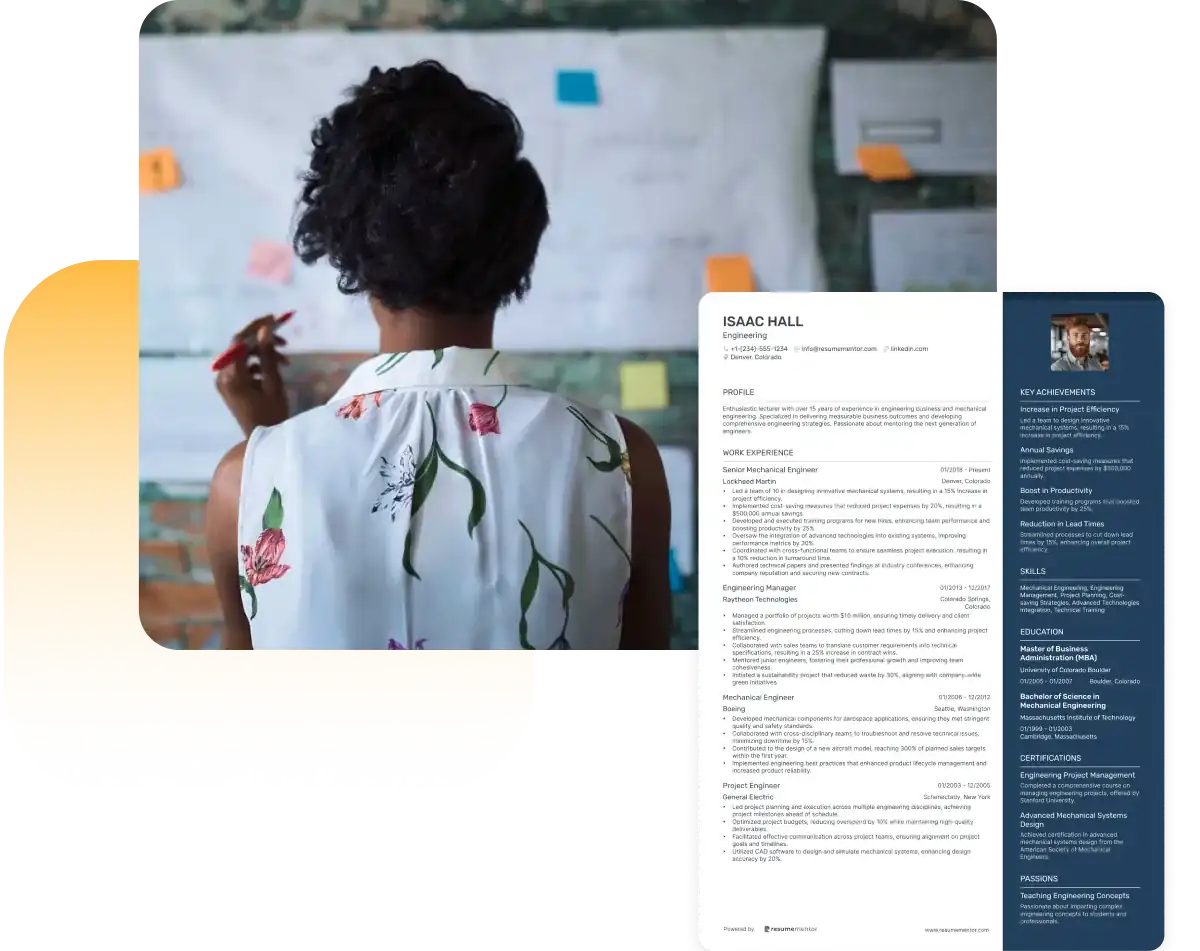
Continue Reading
Check more recommended readings to get the job of your dreams.
Resume
Resources
Tools
© 2025. All rights reserved.
Made with love by people who care.
